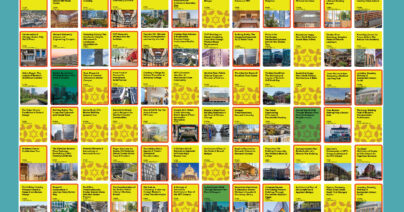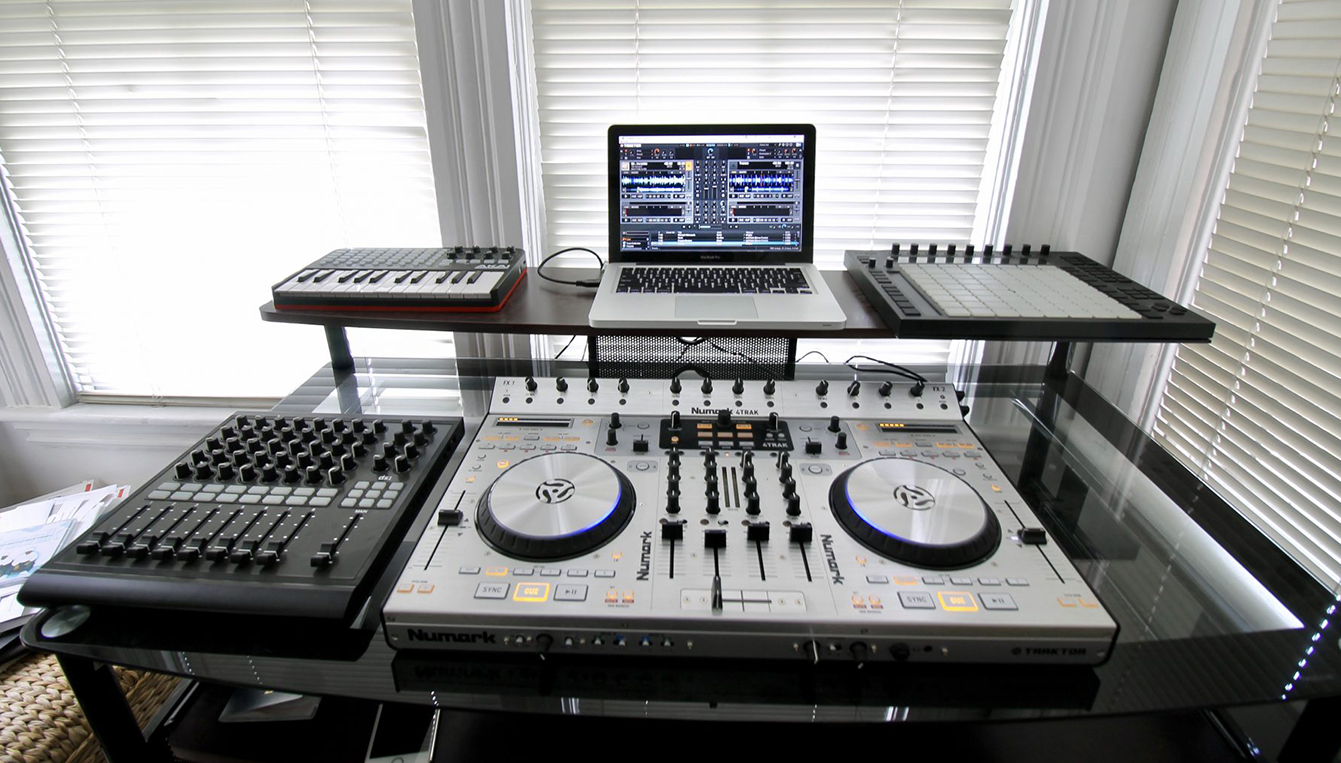 News
News
30 Acentech projects will be toured during AIA25 Conference!
Acentech worked on an astounding 30 projects that are being toured at the AIA25 Conference on Architecture in Boston next month! We had a great time…

Earlier this year, I released Origins, my latest and best solo album to date. It is the 6th album I’ve released overall and the first album I’ve released as Ronin.FM. Musically, this album combines elements of hip-hop, electronica, jazz, rock, and classical to create genre-bending backdrops to lyrics that cover a range of social issues such as education, capitalism, and police brutality. My music is influenced by many genres of music that have historically been associated with specific and drastically different acoustical spaces. Incorporating these sounds into the same mix ended up being one of the biggest issues during the production of this album.
Prior to Origins, I produced and released five albums over a five year span that started in 2011. The first three (Fundamentalism, Objectivism, and The Bigger Picture) were hip-hop albums whose beats were crafted with a combination of samples and software instruments. I have always experienced music like this in acoustically absorptive spaces such as medium-sized concert venues, nightclubs, cars, bedrooms, or headphones, and I did not consider acoustics when I mixed these albums. This started to change, however, once I started incorporating classical instrumental and choral music into my instrumentals: for centuries, the physical spaces that these genres have been experienced in have had almost as much of an impact on the listener’s experience as the music itself. As a result, it is nearly impossible to separate the instrumentation of those genres from the spaces that they are performed in and room acoustics become an essential part of any classical music recording.
I first started using classical instrumentation in my music in 2013 when I released R2K with Kai Kight, a classically-trained violinist. I had never been a fan of classical music growing up but producing this album showed me the overlap between this genre and the other styles that have influenced my sound (mainly hip-hop, electronic, jazz, and rock). This inspired me to play with classical instrumentation heavily on my 2015 drum n bass release, Out of the Blue. Whereas R2K contained a single violinist on all songs (albeit playing multiple parts that were looped on top of each other), many of the songs on Out of the Blue relied heavily on sample packs of entire string, brass, and woodwind sections. I found that I needed to add more reverb to these instruments since it did not sound right to hear entire string/ brass/ woodwind sections playing in a non-reverberant environment. The result was an album that sounded “grand” and “epic” at times due to the illusion of many instruments playing at once in a large, reverberant space. I did not, however, pay much attention to the reverb on the drums and synthesizers, and as a result they over-power and sound detached from the rest of the mix when listening on certain speakers and headphones. “Hero,” “Out of Sight, Out of Mind,” and “Cycle de Sommeil” are a few songs that suffer from this issue.
When I started work on Origins, I wanted to make the vocals, drums, and synths sound like they were performed and recorded in the same space as the string and choir sections. I found myself thinking a lot about the following acoustic and psychoacoustic factors, and how they applied to each instrument in the mix:
In order to address the above issues, I prioritized certain instruments over others in terms of detailed reverb production decisions. Since the vocals and drums are the most prominent features of the mix that command the listener’s attention, they received the most attention with multiple layered tracks dedicated to direct sound, early reflections, and reverberance. In terms of reverberation, not as much attention was given to the rest of the instruments. There was, however, a lot of attention given to how the vocals and drums interacted with the rest of the mix as a result of auditory masking. At my disposal were the stock Ableton compressor and equalization (EQ) effects as well as a dynamic EQ (basically frequency-dependent compression) plugin by Melda Productions. With each instrument, I used multiple tracks and effect to create a sense of space by mimicking the acoustic and psychoacoustic factors described above.
Each song had one vocal track to function as the direct sound, one or two tracks representing early reflections, and one track for the late reverberance. The direct sound track would be centered and contain the best-recorded take of that song’s lyrics. Since the vocals would be amplified in this hypothetical space that I was mixing for, this track would be compressed, EQ’d, and sometimes treated with a light overdrive effect. In order to mimic the early reflections, one or two tracks with separate takes were added. Using separate takes helped to avoid a comb-filtering effect that misrepresents the varied arrival of early reflections to the listener’s location. A medium amount of reverb was added to these tracks and their levels were lowered to a point where they would not clash with the primary direct sound vocal track. If two early reflection tracks were being used, they were panned left and right to enhance the vocal’s spatial quality. Lastly, a final vocal track with a large amount of reverb and low volume level was added to mimic late reverberance. Even though this track is not noticeable in most of the songs, its presence was important and removing it would cause something to sound “off” in the final mix.
I wanted the album to sound “live,” like it was in a real space, and the mixing of the drums was very important in achieving this. As a result, I took a similar (yet somewhat simplified) approach to mixing them. One primary track (usually with an electronic drum kit) was used to mimic direct sound. This was then layered with an early reflection track (usually with an acoustic drum kit) that was compressed with a medium amount of reverb. In order to make the drums sound loud and lively, the reverb was applied before the compression. This often caused the drums to take up too much “room” in the mix, however, so I countered this by EQing the acoustic drum track and side-chaining it to the electronic drum track. The result is that the acoustic drums “duck” and make room for each electronic drum hit, and the electronic drums stay “in front.” Unlike the vocals, however, I chose to not add late reverberation to the drums since doing so often caused their clarity to suffer.
The synthesizer, string, and choir tracks were intended to create space and color while leaving the vocals and drums as the primary focus of this album. In general, the strings and choir received large amounts of reverberation while the amount of reverberation on the synths varied depending on the frequency and decay times of each sound. I paid a lot of attention to how these tracks interacted with the drums and the vocals. In most cases, the synths, strings, and/ or choir were side-chained to the vocals and/or drums. This was accomplished by either side-chaining the entire level of an instrument with a compressor (temporal masking, usually with drums) or a specific section of an instrument’s frequency content using a dynamic EQ (frequency masking, usually with vocals). Both techniques caused the secondary instruments to make room for the vocals and drums when they play. Frequency masking keeps the masked instrument audible while making room for vocals, while temporal masking makes the masked sound temporarily inaudible while making room for drums. I used frequency masking on instruments with major roles in a song (such as the string section in “Le Rêve”) and used temporal masking on instruments with less important roles (such as the synth sounds in “Live In Fear”).
Even though this mixing approach seems orderly as I write about it in hindsight, the actual mixing process was chaotic and not all of the songs strictly follow the descriptions from above. The songs that follow the process the closest however (mainly tracks 3-9) have the desired effect of sounding livelier than most studio recordings. Additionally, there was no spatial disconnect between instruments like there is on Out of the Blue; all of the instruments and vocals sound as though they are together in the same space. There are still a number of flaws in these songs, but overall you would never guess that this entire album was mixed on Apple earbuds, a pair of Audio Technica ATH-M50x headphones, and some Toyota RAV 4 speakers! Additionally, Nick Dragoni did a fantastic job at mastering it and preserving my overall vision of how I wanted the album to sound. I am very satisfied overall with how the whole thing came out and I’m working on some big ideas for my next release.
Note: The feature image shows the actual system I used for the creation of this album. The turntables were used for doing the scratches on the songs.